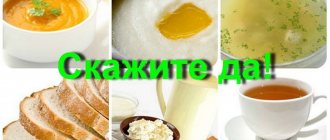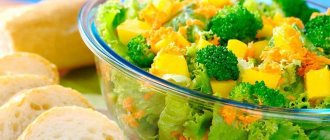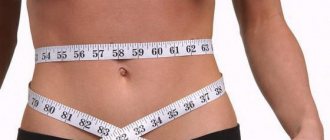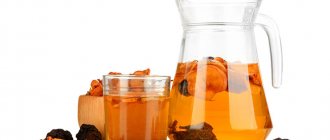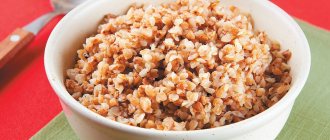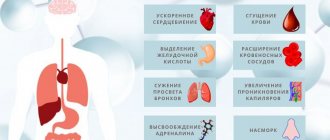» Weight loss » Diets » Diet table No. 5 for children
0
376
Article rating
Diet table No. 5 for children is recommended by the attending physician for various diseases of the gallbladder, liver and biliary tract. These are diseases such as gastritis, hepatitis, pancreatitis and cholelithiasis.
The main goal of this system is to limit foods that may cause any complications. Diet table No. 5 can improve the functioning of the liver and gallbladder.
Diet features
Diet table 5 provides for fractional meals (5-6 times a day) with a limitation of fats, especially refractory ones. Such nutrition should prevent stagnation of bile in the gallbladder and help restore liver cells damaged by the disease.
For a patient for whom the doctor prescribes table 5, the diet prohibits eating fried, smoked, spicy, canned, and fatty foods. Products such as mushrooms, radishes, sorrel, beans, spices, cocoa and chocolate are completely excluded. It is unacceptable to eat rich pastries and fresh bread.
Dishes for diet table number 5 must be steamed, baked in the oven or boiled and eaten warm.
It is contraindicated to eat too cold or hot food. Salt intake should also be limited.
However, a diet that is gentle on a diseased liver must be complete and contain the proteins, carbohydrates, microelements and vitamins necessary for the body. Therefore, for table number 5, the diet offers a wide variety of products:
- lean meat (beef, rabbit), poultry and fish (pike perch, cod, navaga);
- milk, cottage cheese and kefir;
- pasta;
- 1 egg per day (preferably as a steamed omelet);
- bread, preferably black and stale;
- vegetables, raw or boiled;
- cereals - oatmeal, semolina, buckwheat, rice;
- any berries and fruits;
- butter and vegetable oil, as an addition to dishes;
- sugar, jam, jam, honey;
- tea or coffee with milk, rosehip decoction, fruit and vegetable juices.
In addition to the ban on eating foods that, in principle, are undesirable even for healthy people, diet table 5 involves limiting broths, meat and fish soups. If you cook soup with meat, then after 5 minutes of boiling the first broth should be poured out, then pour a fresh portion of water over the finely chopped meat and cook the broth until tender.
It is recommended to cook milk porridges first in water, adding milk only at the end of cooking. You should limit your consumption of cheese. The consumption of sharp cheeses is completely excluded, as well as hot seasonings, for example, mustard, pepper or horseradish.
Therapeutic diets for children
Diet for children with allergies
If a child suffers from allergies grows up in a family, then he needs to follow a certain diet. Otherwise, the baby will be plagued by such health problems as: urticaria, allergic rhinitis, diathesis, conjunctivitis.
However, despite the fact that the child needs to adhere to dietary nutrition, his diet must be complete. Parents should definitely know which foods are more allergenic and which are less allergenic.
Thus, the products that most often cause allergic reactions include: eggs and milk, citrus fruits, berries (raspberries, strawberries, strawberries), wheat and rye, chocolate, coffee, honey, cocoa, nuts.
Products that have an average allergenic potential: potatoes, legumes, beets, apricots, peaches, bananas, blueberries, black currants.
The menu of a child with allergies should be based on products such as:
- Fermented milk drinks and products.
- Meat: low-fat pork, lamb, turkey, rabbit, horse meat.
- Green apples and pears.
- Dill and parsley.
- White and cauliflower cabbage, cucumbers and zucchini, yellow cherries.
The products on this list have minimal allergenic potential, so they can be offered to a child with allergies.
Read more: Diet for allergies
For rotavirus infection
Rotavirus infection (intestinal flu) is a disease that can affect not only children, but also adults. However, it is young children who are most often infected. Intestinal flu is indicated by symptoms such as: disturbances in the functioning of the digestive system (diarrhea, vomiting, abdominal pain), high body temperature.
Rules for feeding a child with rotavirus infection:
- It is important to ensure that your child does not become dehydrated. To normalize the electrolyte balance, the baby is offered Regidron, but often children refuse to take it because it has a specific taste. Therefore, you need to give your child as much water as possible, weak tea, you can drink compote, decoctions of mint and chamomile.
- If the child does not ask to eat, then there is no need to force him. The main thing is that he drinks enough.
- You need to drink in small portions so as not to provoke vomiting.
In the first 2-3 days, every effort should be made to normalize the child’s stool. Therefore, you can offer him lean rice porridge and stewed apples.
In the future, the menu will be expanded to include the following products:
- Biscuits, crackers.
- Vegetable broth. Fish and meat broth is only low-fat; for this, after boiling, drain the water, pour in clean broth and continue to cook the food.
- Soup with cereals that must be thoroughly boiled.
- Steam omelette.
- Steamed chicken or turkey cutlets, boiled fish fillet. You can use fish such as pollock, cod and hake.
- Mashed potatoes. No oil is added to it.
After 3-4 days from stool normalization, fermented milk drinks can be introduced into the child’s diet. Any products that could provoke disturbances in the functioning of the digestive system should be removed from the menu. You should not give your child milk, cheese, sugar, honey, brown bread, pastries, pasta, dumplings, dumplings, legumes, fatty fish and meat, sausage, smoked products, chocolate, cocoa, coffee, strong black tea.
Only after 10 days can you transfer the child to the usual menu. Until all the symptoms of rotavirus infection are eliminated, he must adhere to a diet.
Read more: Intestinal infection in children: what to do?
When vomiting
If a child is vomiting, he will lose a lot of fluid. As temperatures rise, the situation is getting worse. During the first day the baby is not fed, but he must be given water frequently. You can give herbal tea, rosehip decoction, unsweetened mineral water without carbon. The child should drink in small portions, but as often as possible.
When the vomiting stops, you need to start feeding the baby. You should follow a gentle diet. Products that should be excluded from the menu:
- Fried foods.
- Fresh fruits and vegetables, natural juices.
- Oils: butter and sunflower.
- Sausages and smoked products.
- Rolls, confectionery, sweets and baked goods.
- Sparkling water.
- Yachka, pearl barley and millet.
In order for the gastrointestinal tract to recover faster, the menu should be based on foods that are easily digestible:
- Baked apples.
- Bananas.
- Compote with dried fruits and rosehip decoction.
- Boiled grated vegetables. Preference should be given to carrots and apples.
All dishes must be warm. Food that is too hot or too cold will irritate the stomach and slow down the healing process.
Read more: Vomiting in a child without fever and without diarrhea
For urticaria
For urticaria, the child’s menu should be based on hypoallergenic products. At the age of up to 1.5 years, the child’s nutrition should be “rejuvenated”, that is, if an allergic reaction occurs, his menu is transferred back to the previous level. This must be done until a complete recovery occurs.
The following foods are removed from the diet:
- Citrus.
- Chocolate and all products containing cocoa.
- Mushrooms.
- Nuts.
- Products that have undergone a smoking process.
For urticaria, a child can receive the following foods:
- Fermented milk drinks and low-fat products: kefir, sour cream, yogurt, cottage cheese. It is important to purchase only natural products that do not contain dyes, additives or preservatives.
- Cereals: corn, rice, buckwheat. You need to cook porridge in water.
- Boiled meat: beef, poultry. It is important to choose lean meats.
- Baked vegetables and apples.
- Vegetable soups.
- Green apples, pears, grapes.
In addition to the fact that the child is brought to a specialized menu, he must receive drug therapy. Only a doctor can prescribe treatment. If you ignore taking medications, urticaria will become chronic.
Read more: Urticaria - causes and symptoms
For atopic dermatitis
Atopic dermatitis requires avoiding eating foods that contain dyes and food additives. If it has been established which food components lead to an allergic reaction, they must be discarded. Provided that the baby is fed breast milk, the nursing mother should monitor her menu with special care.
The baby should eat according to the diet, but he should not be overfed.
Products that may be present on the child's menu:
- Dairy products. You can offer your child one-day kefir.
- Porridges that do not contain gluten: rice, corn, buckwheat.
- Vegetable soups, broths based on beef tenderloin.
- Baked apples.
- Boiled potatoes.
- Black bread,
- Dill and parsley.
Doctors strongly recommend removing all baked goods from the child’s menu. On an industrial scale, margarine is used for their production, which is strictly prohibited for consumption in this form of dermatitis.
Read more: Atopic dermatitis in adults and children
For pyelonephritis
Treatment of pyelonephritis is aimed at removing intoxication from the body. Therefore, the child should receive as much fluid as possible. It is allowed to give him fruit drinks, compotes, herbal decoctions, weakly brewed black tea, infusions of rose hips, rowan and black currant.
You should also include fruits and vegetables in your child’s diet, which have a diuretic effect. These can be zucchini, melons and watermelons.
You can offer your child dairy products, confectionery, cereals, sugar, and dried fruits.
The following are prohibited:
- Smoked products.
- Coffee and cocoa.
- Chocolate.
- Fried foods.
- Spices and seasonings.
- Spinach and cauliflower.
- Mushrooms.
- Meat and fish, as well as broths prepared on their basis.
Gluten-free diet
A gluten-free diet requires avoiding all foods that contain gluten - oats, rye, wheat, barley. Children with autism must adhere to a menu that does not contain gluten-containing grains.
There is also a ban on chocolate and any baked goods. When a child enters kindergarten, parents must notify its management about the existing problem.
Read more: List of gluten-free and gluten-containing products
Indicative diet menu table 5
- breakfast: vegetable vinaigrette with a small piece of herring + a piece of stale bread + tea with milk;
- second breakfast: boiled meat with a side dish of buckwheat porridge + vegetable juice;
- lunch: vegetable soup + boiled fish with mashed potatoes and vegetables + dried fruit compote;
- dinner: cottage cheese casserole + tea.
- before bed: fruit jelly with unsweetened dry cookies.
The next day the menu could be like this:
- breakfast: cottage cheese with sour cream + oatmeal porridge with milk + tea;
- second breakfast: baked apple;
- lunch: vegetable soup + boiled chicken in milk sauce with a side dish of boiled rice + dried fruit compote;
- afternoon snack: rosehip decoction;
- dinner: boiled fish with mashed potatoes + cheesecake with cottage cheese + tea;
- before bed: kefir.
What is allowed and what is not allowed: prohibited and permitted products
The diet for a child after an illness should be based not only on the correct selection of fresh products, but also on the method of processing them. You can bake, stew, boil, steam. Smoking and frying are strictly excluded.
The following products are prohibited:
- smoked and pickled;
- chocolate dishes and with the addition of cream;
- all derivatives from butter dough;
- spicy and bitter vegetables;
- mushrooms;
- ice cream;
- any fatty fish or animal meat;
- pearl barley, millet and barley cereals;
- meat by-products;
- scrambled eggs and boiled chicken eggs;
- cocoa, coffee, sparkling water;
- berries, fruits with sour taste.
Heat-treated vegetables and fresh cucumbers in small quantities are allowed. From drinks - any decoctions based on herbs and rose hips, tea with milk, pure water, jelly. Oils should be chosen only of vegetable origin; you can use a little butter, but unsalted and fresh.
For meat, it is recommended to give rabbit, turkey, veal, chicken, and for fish - pollock, pike, hake, perch, pike perch.
Allowed sweets are natural marmalade, marshmallows, dry cookies, dried fruits, jam and various types of honey. It is acceptable to include seafood, crackers, crispbread, and rye flour bread in the menu in limited quantities.
Diet menu table 5 for children
Medical nutrition is also relevant for children. Diet table 5 for children is prescribed for diseases of the kidneys and bladder.
Excluding foods such as chocolate, carbonated water, hot seasonings, smoked foods and marinades will only benefit the child’s body. Diet table 5 includes the protein, carbohydrates, and vitamins he needs in full. This includes lean meats, fish, vegetables, fruits, berries, butter and vegetable oils.
Milk, cottage cheese and fermented milk products contain protein, calcium and phosphorus, which a growing child urgently needs, and help normalize the children's intestinal microflora, especially if treatment was carried out with the use of antibiotics. Such proper and gentle nutrition in small portions 4-5 times a day will help the child quickly recover from illness.
Due to poor nutrition, the number of liver and biliary tract diseases in children has recently increased significantly. The causes of liver damage can be not only errors in diet, but also infectious diseases.
Nutritional features and diet rules for different types of dyskinesia
If you are diagnosed with biliary dyskinesia, a “table 5” diet for children is indicated, which should be followed for at least six months.
The main thing during this period is to relieve the liver and prevent bile stagnation. Violation of its outflow occurs due to improper diet and abuse of fried foods.
JVP in children (as well as in adults) can develop in two ways. The first is hypotonic, in which the tone of the smooth muscles lining the bile duct is reduced. The second is hypertensive, characterized by increased smooth muscle tone.
READ ALSO: What are the symptoms of ADHD in children?
Regardless of the type of dyskinesia, the general principles of diet No. 5 are as follows:
- salt restriction (up to 5-10 grams per day),
- exclusion of cold dishes,
- ban on fried and smoked foods,
- a ban on foods that stimulate the secretion of gastric juice and flatulence, including coarse fiber,
- minimum fat in food,
- eating every 3-4 hours, at the same time,
- You can eat up to 150 grams at a time, you should not overeat,
- maintaining a drinking regime to prevent constipation.
For what diseases of the gastrointestinal tract is the diet indicated?
Diet No. 5 is prescribed only by a doctor. It is indicated for the following diseases of the digestive system:
- Liver diseases.
Cirrhosis, chronic hepatitis of various origins (viral, toxic, infectious). - Diseases of the biliary tract and gallbladder.
These are cholecystitis, cholelithiasis, cholangitis, postoperative syndrome after removal of the gallbladder. Very often, the cause of damage to the biliary tract is Giardia, protozoa and other pathogens. - Stomach diseases.
Chronic gastritis and gastroenteritis. - Pancreatic diseases.
Chronic and acute pancreatitis, pancreatoduodenitis.
Diet number 5 for children, what can and cannot be eaten by a child for treatment and weight loss?
Recently, diseases of the digestive tract in children have become increasingly common. This is due to poor nutrition, a large amount of processed foods in the diet, and genetic predisposition. A sick child requires dietary nutrition. The most common diet is table No. 5. Diet 5 for children is universal, suitable for any diseases of the liver, stomach and pancreas. And its advantage is that the diet is varied and balanced.
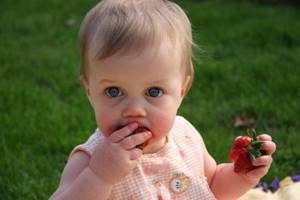
What foods can I eat?
If the doctor has recommended that your child follow diet No. 5, it is better when creating a menu for the week to select foods that are allowed in such a therapeutic diet. All products can be divided into permitted and prohibited.
Permitted products include:
- Dried wheat crackers, yesterday's baked goods.
You can have some flour products made from rye and first or second grade flour. - Pies with various fillings. You can add apples, cottage cheese, minced meat or fish to your dishes. Such pies should not be fried, but baked in the oven.
- Oven-baked or steamed fish.
Children under three years of age should eat white fish (hake, pollock, cod). For older children, you can include red fish in the menu. It is advisable to choose varieties that are not entirely fatty. Salmon or fatty salmon are not suitable for children. An excellent replacement would be trout, as well as pink salmon and chum salmon. - Poultry, turkey, beef.
Pork is lean. Fat and lard are removed before cooking. - Soups cooked in vegetable or cereal broth.
You can cook milk soup, but be sure to dilute the milk with water. - Omelettes, steamed or baked in the oven without a fried crust
. You can boil eggs hard. Eggs should be included in the menu on diet No. 5 no more than 1-2 times a week. - Cabbage
, which should be stewed well. - Special children's vegetable and fruit puree in jars.
It is especially suitable for children from 6 months after the introduction of the first complementary foods. - Fermented milk curds, yogurt or kefir
, enriched with beneficial bifidobacteria and lactobacilli. Give preference to low-fat products. - All sweet fruits and berries.
- All vegetables (except prohibited ones).
With great caution - tomatoes. - Unsweetened and low-fat crackers and biscuits.
Sweets should be chosen without chocolate coating. You can eat honey and various dried fruits. - Cereals.
Give preference to rice, oatmeal or buckwheat. - Fruit drinks and compotes
made from dried fruits and berries. You can make fruit drinks from frozen berries. When properly frozen, they do not lose their beneficial properties and vitamins. Still mineral water. Various berry jelly. The tea should not be strong. Cocoa with milk.
After numerous observations of children with various diseases of the gastrointestinal tract, scientists compiled tables of possible product combinations.
By eliminating prohibited foods, you can achieve stable remission of the disease.
If your child has loose stools, give preference to products that strengthen them. Be sure to include rice porridge and meat products in your diet. For constipation, you should increase the amount of vegetables and fruits. The beneficial fiber they contain will have a positive stimulating effect on intestinal motor function.
Allowed products: table
Diet table number 5 for children includes a list of foods necessary for the body. The emphasis is on protein products. Fats should be excluded. This is clearly demonstrated in the table.
| Product category | Allowed |
| Meat and fish | Low-fat types (beef, veal, rabbit, perch, crucian carp, cod, pike perch). Use boiled and baked |
| Bird | Boiled chicken, turkey fillet |
| Flour | Stale bread. Galette cookies |
| Cereals | Buckwheat, oatmeal, semolina, rice - in the form of boiled, viscous porridge. Pasta made from durum wheat is allowed |
| Soups | Vegetarian soups made with vegetable broth from recommended cereals |
| Milk | Low-fat cheese, yogurt, cottage cheese, milk |
| Vegetables | Cabbage, fresh tomatoes, cucumbers, young greens. Eat boiled zucchini, onions, beets and carrots |
| Fruits | Watermelon, peaches, bananas, apricots, pears, melons, apples. Non-acidic berries: blueberries, strawberries. Dried fruits. |
| Beverages | Tea without steeping, fruit juices, compotes made from dried fruits |
What is better to exclude?
- Fresh baked goods and baked goods.
All baking should be left until tomorrow and only yesterday's flour products should be eaten. Dishes made from puff pastry are prohibited.
- Salted and fatty fish.
- All industrially prepared meat products:
sausages, frankfurters and sausages, pates from duck and pork by-products. Smoked and salted pork lard.
- Soups cooked in fatty meat or fish broths.
During the cooking process, a huge amount of extractive substances are released into the broth, which can cause exacerbation of gastritis or pancreatitis in a child.
-
hard-boiled eggs
- All pickles and canned goods.
- Sour cream, cheese,
and all high-fat dairy products.
- Sour berries and fruits.
- Spicy vegetables:
sorrel, green and onions, garlic, and radishes.
- Cereal porridges:
made from corn, millet and pearl barley.
- Packaged sweet juices, strong coffee.
Sample menu for the day
When planning your daily menu, try to include as many different foods as possible in your child’s diet. This way he will receive more nutrients and vitamins necessary for his growth and development.
Sample menu for the day:
- Breakfast.
Rice casserole with dried and candied fruits. If desired, you can decorate with strawberry yogurt. Unsweetened, weak tea. - A banana is a good snack.
For older children, add some walnuts. - For lunch -
creamy soup with cauliflower and ground turkey meatballs. For the second course - vegetable pilaf. Dried fruits compote. - Afternoon snack
. Cottage cheese with pear and almond petals. Lingonberry juice. - For dinner,
stew pink salmon in vegetable sauce. You can serve boiled fluffy rice as a side dish. Complete the dish with a vegetable salad dressed with vegetable oil. For dessert - oatmeal crackers with raisins. Unsweetened tea.
When considering your diet, be guided by your child’s taste preferences.
If your baby prefers cereals and vegetables, prepare casseroles or porridges. Be sure to include lean meat products in your diet. They are needed for the growth and development of the child.
Delicious children's menu recipes
The children's menu for diet No. 5 is very varied. You can combine all the products from the approved list, getting new and interesting recipes. Such nutrition will help maintain the health of the whole family and prevent possible exacerbations of chronic diseases of the gastrointestinal tract.
Lazy dumplings with berry sauce
- Take 500 g of five percent cottage cheese. Rub it thoroughly through a sieve. This will make the dish more airy and tender. Add one egg, a little salt and a tablespoon of sugar. Add flour until a fairly thick dough is formed. Mix it thoroughly. Let the dough sit and swell for a while.
- At this time, place a pan of salted water on the stove. Bring to a boil. Cut the dough into long strips (about two centimeters thick). Cut into cubes. Drop the dough pieces into boiling water. Cook from the moment they rise to the surface for 12-15 minutes. Remove with a slotted spoon and place on a plate. Excess water should drain.
- Making berry sauce is quite simple.
To do this, take any berries. They can be fresh or frozen. It all depends on the season. Boil the berries with a little water (until syrup forms). Add 2 tablespoons of sugar per approximately 400-500 g of berries. Mix 1 tablespoon potato starch with cold water. Stir thoroughly so that there are no lumps. - When the berries have boiled with sugar for 10 minutes, pour in the starch in a thin stream. Heat through, but do not bring to a boil. When the first bubbles appear, remove from heat. The sauce is ready!
- Cool the berry sauce and serve with dumplings. You can decorate the dish with banana or fresh berries. Be sure that your baby will really like this dish, and he will certainly ask for more.
This simple and simple recipe will help mothers feed cottage cheese to babies who categorically refuse any fermented milk products.
Diet table 5 for children is necessary when the child has diseases of the pancreas, liver and gall bladder. Often the cause of diseases of the gastrointestinal tract are infectious diseases, irregular diet, poor diet, overcooked, fatty foods, dry food and frequent consumption of fast food. This diet is prescribed outside the acute stage.
Healthy recipes for kids
Table 5 imposes a ban on a number of products. However, this does not prevent children from being fed tasty and varied dishes. Diseases of the digestive system do not exclude the consumption of vegetable and meat stews, lean meats, fish, various cereals, as well as fruits and desserts.
White omelette
One of the light and healthy dishes. The easiest way to prepare it is in a double boiler. You should take a couple of fresh eggs, break them and separate the whites from the yolks. Egg whites have almost no cholesterol. Add salt and milk, a spoonful of vegetable oil, and beat well with a blender. Place the container with the resulting mixture in a double boiler. The dish takes about 10 minutes to prepare and can be served.
Vegetable casserole
The casserole is especially popular in the summer-autumn season, when the assortment of fresh vegetables is richest. The set of vegetables includes zucchini, peppers, and eggplants. They fully comply with the requirements of the diet of table 5. They are cut into cubes, add a little grated cheese and the white of one egg. Everything is thoroughly mixed. The container with the contents is covered with foil and placed in a double boiler. The finished casserole is salted to taste and sprinkled with finely chopped herbs.
Beetroot cutlets
There is no meat in beet cutlets; this is an exclusively dietary dish. Its main ingredients are beets and other vegetables, as well as binding ingredients: flour, semolina, chicken egg.
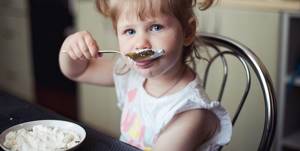
When considering your diet, be guided by your child’s taste preferences.
To obtain such a dish, you need to boil the beets, grate them, add a raw egg and salt. Then add semolina and distribute it over the beet mass. After this, you need to make cutlets from the beetroot “minced meat”. Now you can fry them in oil. During the frying process, it is advisable to cover the pan with a lid so that the cutlets are additionally steamed.
Fish casserole with vegetables
To obtain this dietary dish, preheat the oven to 160 degrees. Arrange the casserole in layers in a roasting pan. Place potatoes on the bottom, which need to be salted and peppered, then carrots. Grease with mayonnaise or sour cream.
Next, fish fillets cut into thin slices are placed. Everything is poured with lemon juice, seasoned with spices, sprinkled with salt and covered with onions. Slices of zucchini are placed on top of the onions, and tomatoes are placed on top. Salt is added again, as well as pepper and grated hard cheese. The container is placed in a preheated oven for 35-40 minutes. Once the casserole has cooled, it can be served.
Lazy dumplings with berry sauce
You need to stock up on cottage cheese, sour cream, eggs, sugar, semolina. All ingredients are mixed and set aside for half an hour until the semolina swells. At the same time, the sauce is cooked. Sugar is added to the berries, and the container with the mixture is placed on the fire. Then starch dissolved in water is poured into the contents, the liquid is brought to a boil, and the fire is turned off.
Heat water in a wide saucepan. Flour is added to the curd mixture, pieces of dough are plucked from this mass, from which small balls or rolls are made. The resulting dumplings are thrown into boiling water and cooked until they float to the surface. The finished dumplings are taken out, poured with butter and berry sauce, and served.
Oat cookies
This type of baking does not require flour. Diet cookies for table 5 are made from oatmeal and eggs. No oil needed either. Oatmeal is ground in a coffee grinder and a handful of raisins is added to it. Beat 2 chicken eggs, adding 3 tsp. sugar, a pinch of vanillin and cinnamon. Place a baking sheet with cookies laid out in it in an oven heated to 180 degrees. Bake for 15-20 minutes.
Pumpkin Noodle Casserole
You need about a glass of grated fresh pumpkin, 200 g of noodles, half a glass of milk, 1 egg, 2 tbsp. l. sugar and 1 tbsp. l. butter. Add salt and sugar to the pureed pumpkin and simmer until soft. The noodles need to be cooked separately. Then butter and milk are added to it. The mixture is set aside for 30 minutes. Then an egg is broken into the contents, everything is laid out on a baking sheet and placed in the oven for 20 minutes. Cool the finished casserole, apply a layer of sour cream and serve.
Protein omelet with cheese
Required ingredients:
- 2 chicken eggs;
- 2 tbsp. l. milk;
- 10 g cheese;
- a pinch of salt.
For the omelet you will need butter. It should be melted in a frying pan. Place egg whites in a common container with milk, but do not shake. Pour the mixture into a hot frying pan. After 3-4 minutes, sprinkle the omelette with grated cheese and cover with a lid for 2 minutes. Then remove the omelette. Serve with sour cream.
Vegetable caviar
Prepared as an addition to main dishes. For caviar you should take 2 potatoes, 1 carrot, 1 fresh cucumber, 1 onion. You will also need vegetable oil and salt.
Potatoes and carrots need to be boiled whole, then cooled, peeled and cut into large portions. Also cut the onion into large pieces and fry it in a frying pan. Finely chop the cucumber. All components are processed in a meat grinder. The mixture prepared in this way is seasoned with vegetable oil, salt is added to it and mixed well. The caviar is ready.
Prohibited products
To follow the diet table 5, it is necessary to exclude from the child’s diet all fresh baked goods, as well as butter dough (pancakes, pies, pancakes, cakes), soups cooked in meat broth, fatty fish and meats, mushrooms, ice cream, lard, products with cream , fried eggs and hard-boiled eggs. Also excluded are sour berries and fruits, radishes, green onions, sorrel, radishes, spinach, mustard, legumes, horseradish, peppers, mustard. Caviar, smoked meats, canned food, and pickled vegetables are prohibited.
Do not be afraid of such a large list of prohibited foods, because it does not mean that your child will starve.
In reality, this diet is not considered very restrictive and offers a diet consisting of a variety of foods that are included in a healthy diet for a young child.
This diet for children is characterized by a physiologically normal content of carbohydrates and proteins with a slight restriction of fats. This system assumes that your child’s menu will contain products containing lipotropic substances, pectins, fiber and liquid.
Menu creation
In general, during the diet period it is necessary to divide meals into 5-6 meals. Let's look at what products are on the menu.
Bread
As for bakery products, baked or dried bread is acceptable. You can take rye, wheat and other types of bread, including coarse bread. Do not forget, however, that fresh bread, puff pastry, any pastry and pies are prohibited.
At the same time, you can add savory products with cottage cheese and apples to the menu, as well as give hard savory cookies and dry biscuits.
Soups
The diet can include a variety of vegetable soups, vegetarian borscht and cabbage soup, soups with cereals, beetroot soup, with pasta in vegetable broth or fruit and milk soups. In this case, vegetables and flour for dressing are not fried, but dried. Soups can be salted, but only served warm.
Pasta and cereals
You can include puddings, casseroles, semi-viscous porridges in your diet, dishes made from buckwheat porridge and oatmeal are especially good. You can prepare pilaf with carrots and dried fruits, pudding with cottage cheese and carrots, semolina, rice, and krupeniki. Boiled pasta. At the same time, pearl barley, barley and millet are excluded.
Vegetables
When dieting table 5 for children, include various types of vegetables and herbs, canned green peas, non-acidic sauerkraut, squash caviar, and ripe tomatoes in the menu. Vegetables are supposed to be either raw, boiled or stewed. They can be in the form of a salad, a side dish or as an independent dish.
Dairy products and milk
Milk is allowed in the diet; it can also be added to tea. Use sour cream, low-fat cottage cheese, yogurt, acidophilus, and mild types of cheese in your diet. You can cook lazy dumplings, puddings, casseroles, curd soufflé, omelet, curd babka, steamed cheesecakes. Vegetable oil and butter are allowed no more than 50 g per day.
Berries and fruits
Berries and fruits should be taken only sweet. From them you can already prepare jelly, compote, mousse, jelly, tea with lemon. You can offer your child jam, honey, and a little sugar in his tea. Marmalade, marshmallows, dried fruits and non-chocolate candies are also acceptable.
Beverages
Tea with milk or lemon, weak tea, tomato juice, fruit and berry juices, rose hip decoction. Cocoa, black coffee, cold drinks, including carbonated ones, are not allowed.
- Diet Table No. 10 and the corresponding menu are prescribed to patients with cardiovascular diseases (heart defects, coronary artery disease, hypertension, rheumatism), diseases of the nervous…
- Diet for obesity No. 8 involves a special menu, the purpose of which is to have a direct effect on metabolism in order to eliminate fat as much as possible. Thanks to…
- For gastritis with high acidity, the main treatment is diet. Therefore, it is necessary to pay special attention to its instructions and doctor’s recommendations. First...
- A diet for liver disease involves a specific menu that is used in the treatment of almost all diseases associated with liver function: cholecystitis, cirrhosis,…
Hello readers! Today I am writing about a very important topic for many people: the 5 table diet, what you can and cannot eat. I will present everything in a convenient visual table. I will also write a sample menu for the week for meals of 5 tables.
Frequently asked questions about table 5
Every parent should take a responsible approach to the issue of feeding the baby, especially during his illness. Basic questions related to nutrition will help you avoid mistakes when creating a diet, thereby maintaining your baby’s good health.
Can a child be given bananas on Diet 5?
Yes, bananas are a sweet fruit, only sour ones are prohibited. The best option is to bake the fruit, boil it, or make a soufflé.
Are oatmeal cookies allowed on the fifth diet?
Oatmeal cookies are allowed, as well as biscuits and any other non-butter cookies. This dessert is useful if you make it at home.
Can I cook pasta if my child likes it?
Pasta, including vermicelli, can be boiled if it is made from premium flour. The second category will not work, only the hard variety.
How long should you maintain the fifth diet?
The duration of nutrition according to this system should be determined by a pediatrician. Following a therapeutic diet for a long time, for example, six months or more, allows you to fully restore the normal functioning of the digestive system.
Can children eat nuts with this diet?
It all depends on the circumstances of the purpose of therapeutic nutrition. Nuts are allowed only if the liver is impaired. The product allows you to speed up the regeneration process of the diseased organ due to the high content of vitamin E and potassium.
Is it possible to give a child cottage cheese on diet 5?
All dairy products with a minimum percentage of fat are acceptable. It is forbidden to add to the diet only those whose fat content is more than 2.5%.
Diet 5 table: who is this diet indicated for?
Diet 5 table is a therapeutic diet. It has nothing to do with weight loss diets. The 5 table diet was developed by the doctor Pevzner almost a hundred years ago, but doctors still prescribe this diet to patients. This suggests that this nutrition system really works and helps improve the patient’s condition.
Nutrition “Table No. 5” is prescribed for diseases of the liver, gall bladder and biliary tract. And specifically when:
- liver cirrhosis, if there is no liver failure
- chronic gastritis
- cholelithiasis (without exacerbation)
- hepatitis (without exacerbation)
- cholecystitis (without exacerbation)
- chronic colitis
- during the recovery period after acute colitis and gastritis
- after removal of the gallbladder (in the postoperative period)
It is worth remembering that nutrition is one of the important components of recovery. Eating according to table No. 5 normalizes digestion and helps improve bile secretion. The liver rests and recovers during the diet. Table No. 5 will help avoid exacerbations. This diet can last for months, years, or even a lifetime. Therefore, you should not consider the 5th table as a diet that limits you, treat it as a way of life, as a good habit.
Video: Diet table No. 5. Dietary recipes. 6 delicious and healthy dishes
Source
Diet No. 5 is rightfully recognized as the most universal. With minor adjustments, it can be recommended even for children. In addition, diet No. 5 is used as a prevention of certain diseases.
Many children suffer from liver diseases and biliary tract dysfunction. There are many reasons for this, ranging from genetic predisposition to poor nutrition. Table 5 for a child can be organized both in hospital and at home.
Diet 5 table: basic principles.
1. The usual amount of protein and carbohydrates remains in the diet. That is, proteins are about 80-100 g, carbohydrates - 250-400 g. The amount depends on gender, physical activity, weight. Fats should be limited to 80 grams. in a day.
2. The calorie content of the diet varies from 2000 to 2800 kcal. Again this depends on the above factors.
3. The number of k increases
lettuce in the diet, mainly due to vegetables. Only vegetables should be eaten in a pureed form, so that it is easier for sick organs to assimilate them, so that the stomach secretes less acid. 4. Increase the amount of pectin in the diet. Pectin is a very important nutritional element. It works as a thickener. It has a very good effect on the liver and pancreas, because it removes toxins from the body that accumulate in the liver. Pectin also lowers cholesterol and blood sugar and provides nutrition for intestinal microflora.
The best sources of pectin are beets, apples, currants, plums, and apricots.
Pectin is found in slightly smaller quantities in other fruits, berries and vegetables. However, it should not be accepted
b pectin as a food additive. In this case, fermentation in the intestines, as well as obstruction, may occur. Natural pectin from fruits and vegetables will be quite enough.
5. Be sure to drink a lot of water. Minimum 1.5 liters per day of clean non-carbonated water, in summer at least 2 liters.
6. Small meals 4-5 times a day every 3-4 hours.
7. Dishes should be eaten boiled, baked, steamed, or stewed. You can't eat fried food. You cannot sauté vegetables and flour.
8. Increase the amount of lipotropic substances in the diet. These are useful amino acids that normalize cholesterol metabolism in the body and help the liver secrete fat.
9. Diet 5 table prohibits eating cold food. Only warm or moderately hot.
10. It is necessary to exclude the following types of products: alcohol, pickled foods, spicy, canned, fatty, soda and coffee.
11. Salt is allowed to be used in cooking. But it’s better to salt the finished dish, so you use less salt. You can eat 10 grams per day. salt, which equals 1 teaspoon.
These are the basic nutritional principles for table No. 5 that must be followed. At the same time, you will reduce the load on the liver, pancreas, and gall bladder. Diet 5 is quite varied that it will not psychologically interfere with your recovery.
Rules for preparing food for diet table No. 5
Your child's food should be warm, but not hot. Cold dishes are excluded. The method of preparing food is extremely important. It is forbidden to eat fried, canned or smoked foods.
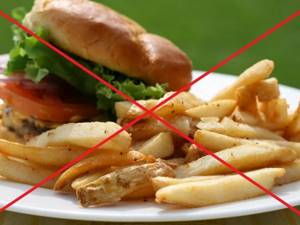
Acceptable dishes are prepared in the following ways:
- Boiled;
- Steamed;
- Baked (rare);
- Stewed (rarely).
When preparing food, the use of salt is reduced. This will facilitate the removal of excess water from the child’s body.
Meals throughout the day should be frequent and in small portions.
What you can and cannot eat on diet 5 table: table.
| Product group | What can you eat on a diet table No. 5 | What not to eat when dieting table No. 5 |
|
|
|
|
|
|
|
|
|
|
|
|
|
|
|
|
|
|
|
|
|
|
|
|
|
|
|
|
|
|
|
|
|
|
|
|
Watch the video: what you can and cannot do with the 5 table diet.
Recipes for some dietary dishes
It’s not difficult to diversify your weekly menu, especially if you use basic recipes.
Cauliflower in batter
Many children love this dish. The cabbage turns out juicy, soft and very tasty.
What you need to prepare:
- head of cauliflower – 1 pc.;
- salt - to taste;
- flour – 3-4 tbsp;
- egg – 2 pcs.;
- milk – 3-4 tbsp;
- vegetable oil for frying – 70-80 ml.
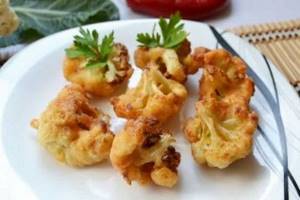
Break the cabbage into florets and boil in salted water for 15 minutes. Make batter from the remaining ingredients. Dip each inflorescence in batter and fry until tender (3-5 minutes).
Chicken liver cutlets
Delicious and healthy cutlets are prepared quickly and easily. Following the rules of the diet, there is no need to fry them. You can either steam it or bake it in the oven.
Products:
- chicken liver – 500 g;
- semolina – 2 tbsp;
- salt – 1 tsp;
- onion – 1 head;
- carrots – 1 pc.
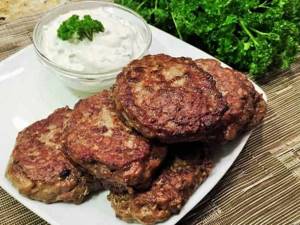
Grind the liver in a blender bowl or pass through a meat grinder. Fry onion cubes and grated carrots in vegetable oil. Add semolina and frying to the liver and let stand for 10 minutes. Mix everything, form cutlets with a tablespoon on a baking sheet covered with parchment paper. Bake at 150 C for 30 minutes.
Sample menu for the week for table No. 5.
The menu is indicative only. You can create your own menu from your favorite permitted foods, taking into account the basic principles of the 5 table diet, which I wrote about above.
| Breakfast | Snack | Dinner | Snack | Dinner |
| Cheesecakes made from low-fat cottage cheese with dried fruits. Maybe the same one. Green weak tea + crackers. | Baked apple. | Borscht in vegetable broth, boiled turkey, carrot puree. | Long-lasting cookies, rosehip decoction. | Baked pike perch, a little sour cream, rice, carrot and beet puree. |
| Buckwheat porridge with boiled beef. Dried fruits compote. | Low-fat yogurt. | Vegetable soup, veal cutlets baked in the oven, fresh salad. | Kissel, a savory pastry. | Mashed potatoes, boiled fish, fresh salad. |
| Steamed egg white omelette, vinaigrette. Tea. | Low-fat cottage cheese with banana. | Buckwheat porridge with steamed fish, vegetable salad, jelly. | Yogurt, apple. | Vegetable stew with lean meat, fresh cucumber, tea. |
| Oatmeal milk. Carrot-apple salad. Rose hip decoction. | with green tea. | Cod soup, a piece of black bread, rice, vegetable juice. | Kefir, some fruit (plum, apple, banana) 150 gr. | Pilaf made from rice, meat, prunes, black bread. |
| Steamed chicken cutlets with milk sauce, rice porridge. Apple compote. | Apple stuffed with cottage cheese with raisins, compote. | Beef meatball soup, durum pasta, boiled fish. | Cottage cheese casserole, juice. | Stuffed cabbage rolls with sour cream (a little), bread, fruit juice. |
| Semolina porridge with milk with the addition of dried apricots, raisins, prunes, tea. | Vinaigrette, tea, crackers. | , a piece of yesterday's bread, compote. | 1 banana | Salad of squid and other seafood. Vegetables, bread. |
| Durum pasta, soaked herring, vegetables, beet juice. | Pear, apple | Mashed potatoes with steamed beef cutlet. | Kefir, baked apple | Rice, baked chicken, vinaigrette. |
That's all. Eat right, don't get sick!
Contents of the article:
Indications for the use of this diet. What foods you can eat and which you can’t. Menu option for the week with recipes.
After an attack of cholecystitis or with stones in the gall bladder, diet 5 helps to return to normal nutrition. The treatment table of specialist M. I. Pevzner is suitable for people who are being discharged from the hospital. The menu is low-fat to reduce the load on the liver.
The fifth table is gentle on the liver. What is possible? What's not allowed?
Chronic hepatitis, gallstones, chronic cholecystitis and pancreatitis, cirrhosis in the compensation stage, biliary dyskinesia are indications for this diet.
Diet Goal #5:
- restore the function of the gastrointestinal tract;
- normalize fat metabolism;
- improve cholesterol levels and bile flow.
- nitrogen
is found in abundance in protein foods (including legumes, nuts, oils), as well as in early vegetables, watermelons with nitrates, sausages and smoked meats, which give their red color to nitrites; - cholesterol
from fatty meat (pork and offal, liver), fish (mackerel, stellate sturgeon and other varieties), eggs, fatty sour cream, cream; - purines
are metabolized into uric acid and are found in chocolate, cocoa, herring, anchovies, pork, peas, beans; - oxalic acid
is an oxalate that enhances gastrointestinal motility and is used in inorganic form in mustard, fatty meats, vinegar, chocolate and candies, cookies, cakes and ice cream; - essential oils
in onion, garlic and celery, parsley and dill, radish and radish can cause spasm of the smooth muscles of the liver; - fiber
, which stimulates the activity of the stomach and the muscles of the digestive organs.
List of products from the fifth table:
- Allowed vegetables include red cabbage, since it has 4 times less fiber than white cabbage and more carotene, cucumbers and tomatoes (not early), starchy (soft) vegetables: beets, carrots, potatoes, onions and peppers. The coarser the product, the finer it needs to be cut and ground.
- Oatmeal, buckwheat, semolina and rice cereals undergo strong heat treatment, so they are easily boiled and are suitable for nutrition. Porridges are necessary for dietary nutrition table 5.
- Ripe fruits contain more pectins and soft fibers: bananas, strawberries and other berries, apples need to be ground, pomegranate should be eaten without seeds, dried fruits should be soaked.
- Soups will fill the lunch time - only in light broths, without frying onions and carrots. Season with low-fat sour cream, chop the meat finely.
- Stew, boil and bake lean beef and chicken, rabbit. In the oven cook hake, pike perch, boil shrimp and stuff squid.
- From eggs, use mainly whites, but one yolk per day is allowed. Omelettes, casseroles, poached or pouched, as well as for stuffing and salads.
- Low-fat dairy products are a good dinner for the liver. Light cheese is allowed, which can be made at home from milk or kefir.
- Choose bread with less coarse fiber: wheat, second-grade rye, baked goods without yeast.
- Because of purines, brew teas weakly, drink juices diluted with water, homemade berry fruit drinks and compotes, decoctions of herbs and dried berries.
- Use butter and vegetable oils sparingly in porridges and salads.
- Eat sweets limited (once a day): marshmallows, marmalade, honey.
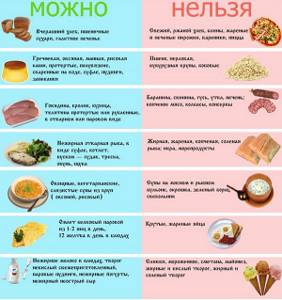
Main prohibited foods
To maintain health, exclude from the diet:
- white cabbage, radish, radishes, green onions, sorrel, garlic, spinach, parsley, fresh vegetables rich in fiber, essential oils, and pickled ones - in vinegar;
- legumes and mushrooms for protein and nitrogen,
- pearl barley, wheat, barley and corn, filled with coarse fibers;
- grapes, plums, sour apricots, cherries - sour and flatulence-promoting fruit varieties;
- rich broths with fish, chicken with skin, pork, beef, mushrooms;
- fatty meat and fish, homemade dairy products;
- pastries, puff pastries, fresh bread, pizza;
- seasonings, horseradish, mustard, mayonnaise, pepper;
- chocolate, cocoa, halva, sweets;
- strong tea, coffee, carbonated drinks and concentrated juices, milkshakes, as they are cold and contain ice cream with trans fats.
Based on what is and is not possible, we will draw up an approximate diet menu 5.
Breakfasts:
- oatmeal soup without broth, low-fat cottage cheese with berries;
- pilaf with steamed dried fruits, yogurt without fat and sugar;
- rice and cottage cheese pudding with apple jam, banana;
- viscous buckwheat porridge, egg and white omelette, apple and carrot puree;
- cheesecakes with dried apricots, a glass of kefir and wheat bread with jam;
- casserole of rice, cottage cheese and dried fruits, cocktail with milk and banana;
- egg white omelette with green beans and tomatoes, fat-free yogurt.
Lunches:
- borscht without broth, steamed lean beef cutlets, stewed zucchini with carrots;
- bulgur salad with tomatoes and herbs, baked chicken fillet with sour cream;
- zucchini and carrot soup, cod baked in foil;
- turkey meatballs with rice, boiled cauliflower soup with zucchini;
- buckwheat soup, lean boiled beef, shredded cabbage salad with cucumber;
- casserole of minced chicken, zucchini, green beans and peppers with rice, stewed tomatoes;
- beetroot soup (or cabbage soup according to the season) with boiled veal, salad of peas, zucchini and carrots without oil.
Dinners:
- vinaigrette, egg (if there was none in the morning and afternoon), cottage cheese with dried fruits;
- lazy cabbage rolls with yoghurt sauce, boiled beet salad with raisins;
- salad of boiled rice, cucumber, tomato and red cabbage with low-fat yogurt, stewed fish (cod or pollock);
- beef stew with eggplant and peppers, pasta and some feta cheese;
- stewed chicken fillet with vegetables, bread with low-fat cottage cheese;
- salad of grainy low-fat cottage cheese, boiled carrots, prunes and sour cream, boiled broccoli;
- minced chicken meatballs or dumplings, green beans, kefir with dried apricots.
Snacks:
- baked pear (apple) with honey;
- sliced banana, apple and raisins with low-fat yogurt;
- pita bread with boiled chicken, tomato and herbs;
- cottage cheese cookies with raisins and banana;
- bread with squash caviar, two pieces of homemade chicken sausage with sweet pepper;
- manna with dried apricots;
- carrot pancakes from semolina in the oven.
It is better to eat marshmallows, marmalade, Turkish delight, non-sour jam and other sweets half an hour after the main meal, since snacking on foods with sugar can provoke a craving for them and a violation of the dietary regime.
You will have to adhere to the diet prescribed by your doctor for two years or more, expand - only under the supervision of a specialist
. Dishes and products of the diet can be supplemented or reduced depending on the individual course of the disease.
What can you cook on the fifth diet?
- Beetroot broth made with beet broth, left to ferment, with the addition of fresh cucumbers, parsley, eggs and low-fat sour cream.
- The meat is boiled in peasant style, then stewed with carrots, celery, potatoes and green peas. Filled with sauce made from boiled milk and flour.
- Lazy dumplings made from cottage cheese mixed with flour, sugar and butter.
- Meatballs are prepared from minced meat with the addition of soaked white bread and stewed in water. Before serving, add a little oil.
Recipes for children on diet No. 5
Diet vegetable soup recipe
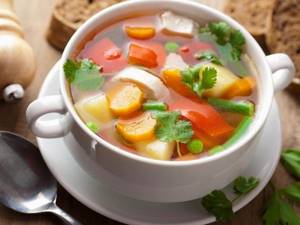
Cut the potatoes into cubes and let them cook. Finely chop the carrots and add to the potatoes. Ten minutes before the potatoes are ready, add broccoli and salt to taste.
Recipe for dietary beef cutlets
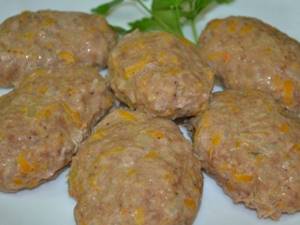
Grind beef or veal in a meat grinder, add bread softened in milk. Form cutlets and place in oven pan. Pour water over the cutlets so that it covers the cutlets to the middle. Place in a preheated oven and bake until done.
Recipe for stewed vegetables
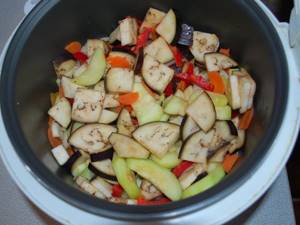
Peel the potatoes and zucchini and cut into cubes. Start simmering in water. Grate the carrots and add to the potatoes and zucchini. Finely chop the tomato and add to the vegetables. Simmer until done, add salt to taste.
Oatmeal Cookies Recipe
Beat butter and sugar, add one egg and milk. Sift the flour, add baking soda, baking powder and a little salt. Mix everything together to form a batter, add oatmeal and mix thoroughly. Spoon the dough onto a greased baking sheet. Make sure to leave enough space between the cookies to prevent them from sticking together.
Bake in a hot oven for 10-15 minutes.
As you can see, despite the large number of prohibited foods, on diet table No. 5 you can create a variety of menus for your child every day. It is important to agree on the menu for your child with your doctor and clarify the recommendations specifically for your case.
Nutrition during exacerbations
In the acute period of liver and gallbladder diseases, diet 5a is practiced - a table with a limitation of fats and mechanical irritants of the gastrointestinal tract:
- What is possible?
Products allowed for table No. 5, but only boiled until soft and ground, which especially applies to meat and vegetables. - What's not allowed?
In addition to the prohibitions listed in the general fifth table, vegetables are added in the form of salads, hard-boiled and soft-boiled eggs, fresh bread and other pastries, and crumbly cereals. - How to cook?
Purees, soufflés, omelettes, steaming, pureeing. - What drink?
Kissels from non-acidic fruits, rosehip decoction, weak tea.
A sample menu for the day looks like this:
- Soufflé made from steamed pureed cottage cheese, grated rice.
- Baked apple.
- Soup with oatmeal, zucchini and carrots, steamed chicken cutlets.
- Rose hip decoction.
- Mashed potatoes, steamed fish dumplings, semolina casserole with powdered sugar.
- Low-fat kefir.
Help the liver
Prevention is always better than diet. You can ensure a gentle cleansing of the liver before complications occur with the help of small changes:
- eat more greens (cress, arugula, broccoli);
- use sesame and linseed oil;
- drink magnesium sulfate water;
- eat pears and apples that remove cholesterol;
- have dinner three hours before bedtime and even after 18:00 with dairy products, lean meat and vegetables.
The liver does not like refined carbohydrates and alcohol, which is worth remembering, overloading the body with toxic substances and sugar.
